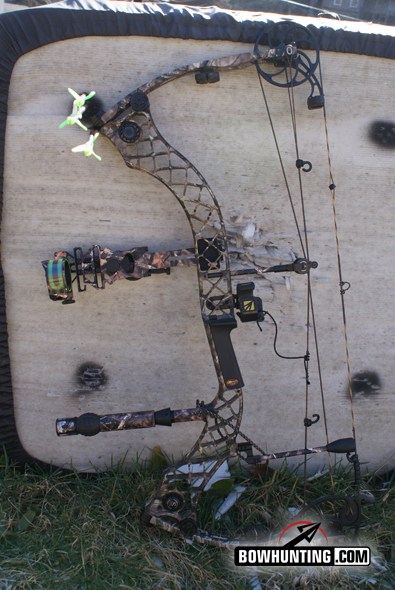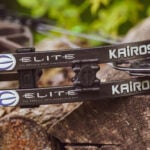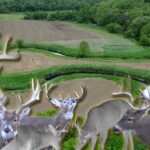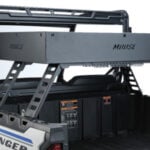LAST UPDATED: May 8th, 2015
Pre-season practice in the backyard is a favored pastime for many archers. Launching arrow after arrow in preparation of opening day, not only strengthens shooting muscles and refines form, it also builds confidence. Indeed it is a good starting point. However, if your goal is to become deadly accurate while attempting shots at big-game, or, if you are simply looking for a little more fun with the “stick and string” before the season arrives, it’s time to break away from your usual routine and discover the countless benefits found only at the local 3-D course. Get ready to elevate your game.
The Problem
Indeed, there is no crime involved with taking aim at a life like 3-D target, or hay bale for that matter, while in the comfort of your own backyard. If that is your primary style of practice, then by all means, go for it. However, do so knowing there are limitations regarding just how far this type of “pre-season” shot-prep can take you. Beneath the surface of traditional practice routines lie inherent problems that could cost you that trophy you’ve worked so hard for. Comparing shots taken in the “backyard” to shots taken in the field is like comparing George Strait to Metallica. Other than making music, they have little in common with one another. Likewise, smashing the 12 ring on the lawn is one thing. Placing an arrow through the lungs of an unsuspecting buck wondering somewhere downrange…. is another. The mere act of shooting the bow is where the similarities end.
Although this type of practice is good for strengthening muscles and building confidence, it does little to prepare you for the vast assortment of shooting scenarios you are likely to face in the field.
Also, I think it’s safe to assume that the distance to the “backyard” target is well known, long before we ever step outside the front door. Once exact ranges are established, it’s easy to fall into the habit of taking shots exclusively from these same locations. What I mean, is that we know exactly where the 10, 20, and 30 yard marks are located, and rarely do we step outside these known variables during practice; it’s food for our ego. I will admit it’s comforting to hear the clashing of arrows during this type of pre-season practice. However, it is a misleading comfort. In the real world, the distance to game is not usually laid out in such a predictable manner.
Shots in the field happen fast. Even with the aid of a laser rangefinder, it’s rare that we know the exact distance to our quarry before hauling back the bowstring. No more boosting our ego here. Wary game animals such as whitetail deer, pronghorn, and big mulie bucks, usually don’t hang around long enough for modern technology to lend us a hand. Even when “pre-ranging” certain land marks, there are no guarantees that our trophy will pause next to any of them; or even give us adequate time in order to take a second reading–provided they show up at all. Unlike the lawn practice from a few months prior, the “real world” variables are now endless, and unknown. The ability to precisely judge distance is vital if we are to improve our accuracy in the field. I hate to say it, but rarely can we hone these skills if we never leave the security of the back lawn.
They may be great at stopping arrows and helping you sight in your pins, but targets such as these will not condition you for the certain change in scenery when you finally draw down on a live game animal. Prepare your “mind’s eye” for the real thing by practicing on a realistic target.
An additional downfall associated with traditional practice, is that no matter how vivid the imagination, it’s difficult to picture our 3-D target in its natural environment as it stands conveniently on a fresh cut lawn; especially if that target is a mind-numbing block of foam. Imagine the shock to the nervous system, if after months of staring through the peep sight at a dull square mass, you’re suddenly resting your pin on the chest of a trophy bull elk. Wet noodles come to mind.
Now you might be thinking, “yeah, but I practice with a 3-d target, so what’s the big deal”? Maybe you’re right. But again, the distance has almost certainly been established, and the target is more than likely set up in an environment that bears no resemblance to what you can expect to face in the field. There’s also a good chance there are no hidden limbs or foliage to shoot around, the terrain is probably flat, and the target is standing in a broadside position. The odds are even better that you have several arrows in which to launch downrange before retrieving them for the next round, and you’re probably shooting alone with no type of pressure to contend with. Realistic, you say? Not even close.
The Solution
Now that we understand the problems associated with “back lawn” shooting, it’s time to find a better way to prepare for the upcoming season. The absolute best way to accomplish this goal is by practicing on a 3-D course. There you will find targets of all shapes and sizes, ranging from bull elk to javelina; all of which stand in varying positions, at unknown distances, across ever changing terrain. Realistic, you ask? Absolutely! Remember, the goal is to find a better way to practice, one that will mimic the situations we are prone to encounter in the field. Therefore, forget about chasing trophies or posting high scores. Instead, focus on the abundant “bowhunting” benefits acquired by practicing in such a realistic environment.
3-D Gear
Visit any 3-D course and you are likely to see bow rig’s that are outfitted with accessories ranging from common, to never seen before. While these gadgets may lend a hand in raising your overall score, they are meaningless unless you plan to use them while hunting. Despite what others may be using, don’t be intimidated or feel as though you are not properly equipped to participate. Your current bowhunting setup is more than adequate to get the job done.
No special equipment is needed in order to enjoy a day on the 3-D course. In fact, you will get the most out of your time spent there by using your current hunting bow setup. Use the rig you plan to hunt with.
What to Expect
It’s true, we can never really emulate an actual hunting experience during practice, but a 3-D course is about as close as you can get. Why? Because the course will demand that you consider shot placement, body angle, and distance…… on every target, on every shot. Toss in a couple of your closest friends, or better yet, complete strangers, and the pressure to perform begins to intensify. Learning to shoot accurately while in a stressful environment is a key factor in becoming a better bowhunter. It’s much tougher than shooting in the backyard, but it will make you an efficient killing machine.

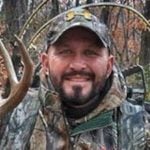 By
By 